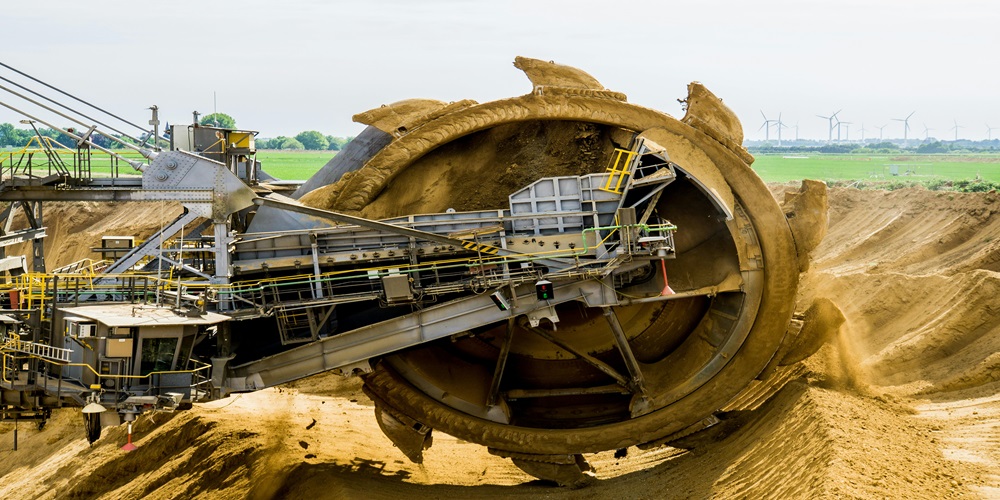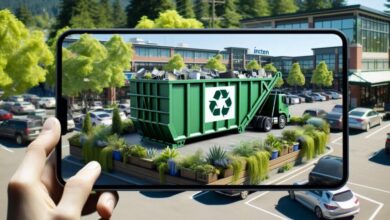A Closer Look at the Role of Technology in Construction and Extraction

Technology is revolutionizing the way we build, extract, and shape the world around us. From drones surveying construction sites to autonomous vehicles digging in mines, the role of technology in construction and extraction industries cannot be overstated. In this blog post, we will take a closer look at how cutting-edge technologies are transforming these fields and paving the way for a more efficient and sustainable future. Join us as we explore the exciting intersection of innovation and industry in construction and extraction!
Welcome to the dynamic world where technology meets construction and extraction industries! From towering skyscrapers to vast mining operations, technological advancements are revolutionizing how we build, extract resources, and shape our environment. Let’s dive into the exciting realm of how innovation is reshaping these sectors for the better.
Benefits of using technology in construction and extraction
Technology has revolutionized the construction and extraction industries, bringing a plethora of benefits to those who embrace it. One major advantage is increased efficiency. With the help of advanced machinery and automation, tasks that used to take days can now be completed in a fraction of the time.
Moreover, technology enhances safety on job sites by providing real-time data on potential hazards and allowing for better monitoring of workers’ well-being. This leads to fewer accidents and injuries, creating a safer working environment for all involved.
Additionally, productivity sees a significant boost with the integration of technology. From drones conducting site surveys to 3D printing components onsite, these innovations streamline processes and reduce downtime, ultimately increasing output levels.
Overall, embracing technology in construction and extraction not only improves operational efficiency but also ensures the well-being of workers while driving productivity to new heights.
Specific technologies being used in these industries (drones, 3D printing, etc.)
In the fast-paced world of construction and extraction, technology plays a pivotal role in revolutionizing traditional practices. One such game-changer is drones – these unmanned aerial vehicles are not just for capturing stunning aerial shots but also for surveying vast construction sites efficiently. With high-resolution cameras and thermal imaging capabilities, drones provide real-time data that enhances decision-making processes.
Another cutting-edge technology making waves in these industries is 3D printing. Imagine being able to create complex architectural designs or intricate machine parts with the push of a button! 3D printing offers unparalleled precision and customization options, reducing material waste and speeding up production timelines significantly.
Virtual reality (VR) and augmented reality (AR) are also becoming popular tools in construction planning and training programs. By immersing users in virtual environments, professionals can visualize projects before they’re built or simulate dangerous work scenarios to enhance safety protocols.
The integration of these advanced technologies is reshaping how construction and extraction projects are executed, pushing boundaries towards greater efficiency, safety standards, and overall productivity.
Impact of technology on efficiency, safety, and productivity
The impact of technology on the construction and extraction industries has been nothing short of transformative. By leveraging cutting-edge tools and innovations, companies are able to significantly enhance efficiency, safety, and productivity across their operations.
Technology enables real-time monitoring of project progress, allowing for quicker decision-making and streamlined workflows. This leads to increased efficiency as tasks are completed with greater precision and in less time.
In terms of safety, advancements like wearable tech and sensors help mitigate risks by providing workers with vital data on environmental conditions or potential hazards. This proactive approach not only safeguards employees but also minimizes downtime due to accidents.
Moreover, the integration of automation and robotics optimizes productivity levels by handling repetitive tasks efficiently while freeing up skilled labor for more complex assignments. This results in accelerated project timelines and higher output rates.
Overall, the adoption of technology is revolutionizing how construction and extraction projects are executed, ushering in a new era of enhanced performance across all fronts.
Challenges faced when implementing technology in these industries
In the fast-paced world of construction and extraction, incorporating technology comes with its own set of challenges. One major hurdle is the initial investment required to adopt new technologies. Companies must allocate resources for equipment, training, and integration into existing workflows.
Another challenge is resistance to change from workers who may be accustomed to traditional methods. Training programs and effective communication are crucial in overcoming this barrier. Additionally, the rapid evolution of technology means that staying updated can be a constant challenge for companies trying to remain competitive.
Integration issues between different technologies can also pose difficulties as compatibility issues may arise. Ensuring seamless communication between various systems is essential for maximizing efficiency and productivity on projects. Despite these challenges, embracing technology in construction and extraction industries is vital for driving innovation and staying ahead in an ever-evolving landscape.
Case studies/examples of successful implementation of technology in construction and extraction
In the construction industry, technology has revolutionized project management and efficiency. One notable case study is how a large construction firm integrated Building Information Modeling (BIM) software to streamline design processes and improve collaboration among teams. By creating 3D models of structures before breaking ground, they reduced errors, minimized rework, and saved both time and money.
Another success story comes from the extraction sector where drones are being used for surveying remote areas and monitoring site progress. A mining company implemented drone technology to conduct aerial surveys that provided accurate data in real-time. This allowed them to optimize their operations, enhance safety measures, and increase productivity.
Furthermore, advancements in wearable technology have significantly improved worker safety on construction sites by providing real-time health monitoring and hazard detection capabilities. Integrating smart helmets with sensors has helped prevent accidents and ensure compliance with safety regulations.
These examples highlight how embracing technological innovations can lead to significant improvements in efficiency, safety standards, and overall project outcomes in the construction and extraction industries.
Future trends and potential advancements in technology for these industries
The future of technology in the construction and extraction industries is poised for groundbreaking advancements. One exciting trend on the horizon is the increased utilization of robotics and automation in various tasks. Robots equipped with AI capabilities can enhance efficiency and precision, reducing human error and streamlining operations.
Another promising development is the integration of virtual reality (VR) and augmented reality (AR) technologies into project planning and visualization. These immersive technologies allow stakeholders to experience projects in a simulated environment before actual construction begins, leading to better decision-making processes.
Furthermore, advancements in 3D printing are revolutionizing how structures are built. The ability to print complex designs quickly using a variety of materials has the potential to reshape traditional construction methods.
Additionally, the adoption of Internet of Things (IoT) devices on job sites enables real-time monitoring of equipment performance, worker safety, and environmental conditions. This connectivity contributes to enhanced productivity and proactive maintenance practices.
Looking ahead, it’s clear that technology will continue to drive innovation in these industries, paving the way for safer work environments, increased sustainability measures, and more efficient project delivery timelines. Stay tuned for what lies ahead!
The importance of staying updated with technological developments
Staying updated with technological developments is crucial for the construction and extraction industries to remain competitive, efficient, and safe. As technology continues to advance at a rapid pace, staying informed about new tools, techniques, and trends can give companies a significant edge in the market. By embracing innovation and integrating new technologies into their operations, organizations in these sectors can enhance productivity, improve safety standards, and drive overall growth. In this ever-evolving landscape of construction and extraction, those who adapt to the latest technological advancements are more likely to thrive in the long run.
Conclusion
As technology continues to rapidly advance, it is becoming an essential tool in the construction and extraction industries. From increased efficiency and safety on job sites to improved design and planning capabilities, incorporating technology has greatly impacted these fields. While there may be some challenges in implementing new technologies, the benefits far outweigh any initial difficulties. It is clear that technology will continue to play a vital role in shaping the future of construction and extraction. Embracing these advancements will only lead to further innovation and progress within these industries.





